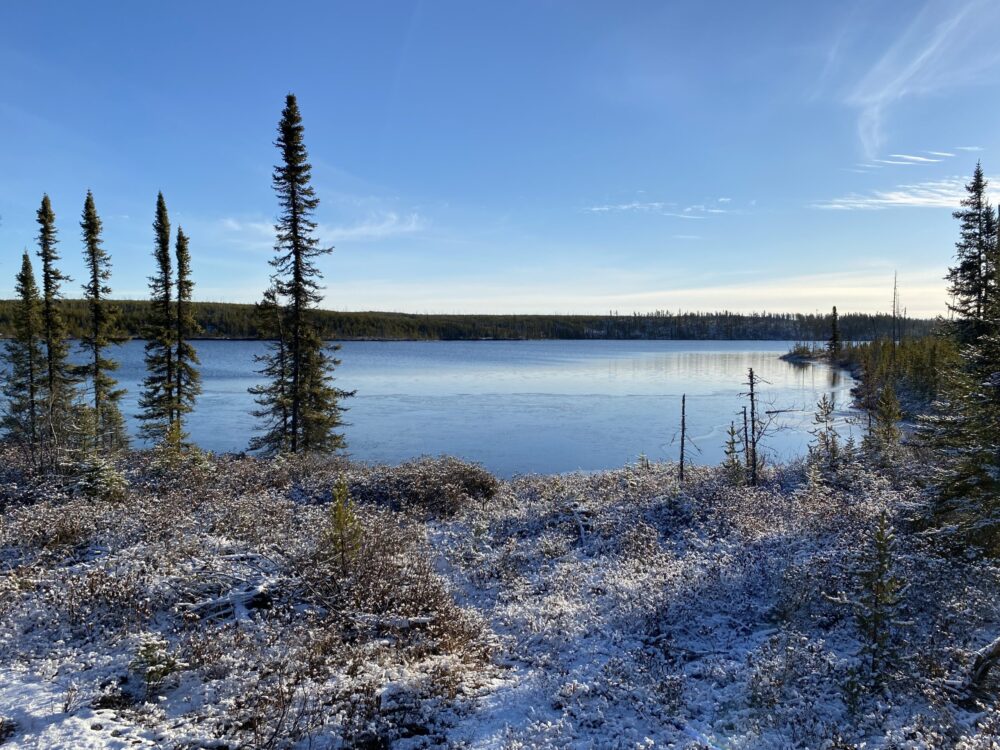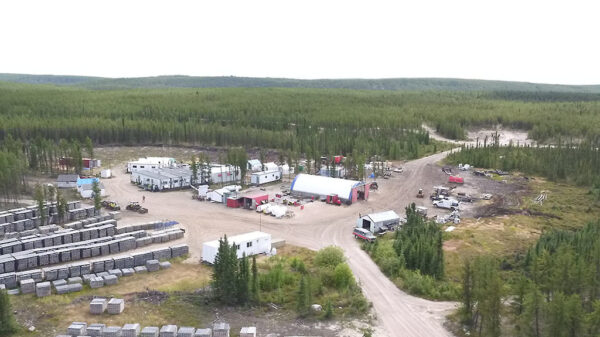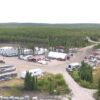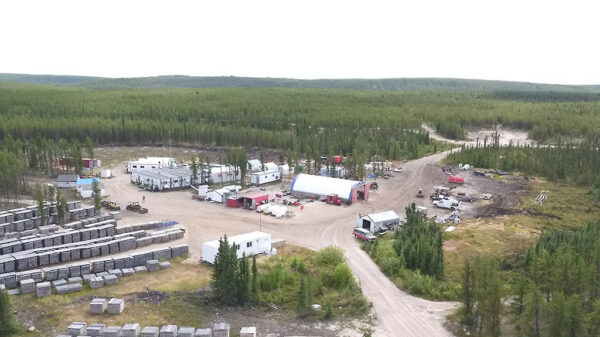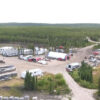CanAlaska Uranium Ltd. (CVE: CVV) (OTCMKTS: CVVUF) finished a battery of Versatile Time Domain electromagnetic (VTEM Plus) tests and surveys on several exploration targets on its Frontier Project in the Athabasca Basin.
The company said in a Thursday press release that it performed these tests to identify and prioritize basement conductors, characterize lithological and alteration variations and refine areas of interest for prospecting.
The project sits in the northeastern Athabasca Basin, about 30 kilometres northeast of the McClean Lake mill complex and the Roughrider uranium deposit, and 35 kilometres north of Cameco Corporation‘s (TSE: CCO) (NYSE: CCJ) Eagle Point uranium mine.
The Frontier project sits five kilometres northeast of the current Athabasca Basin edge. Compilation work identified a 25 kilometre long magnetic low corridor trending northeast. Additionally, the team has named this trend the Roughrider Mineralized Corridor (RMC). Furthermore, this regional scale structure extends southwest beyond the property boundary.
Additionally, the RMC hosts several uranium deposits and showings. These include Roughrider, Midwest, J Zone, Dawn Lake, Moonlight, and Osprey. It also includes the McClean Lake mine and mill complex.
“The Frontier project work has generated some very compelling basement hosted uranium exploration targets along the prolific Roughrider Mineralized Corridor,” said Cory Belyk, CanAlaska’s CEO.
The survey consisted of 931 line kilometers using a helicopter surveying at a 200 metre line spacing across the project. Geotech Ltd. of Aurora, Ontario conducted a high resolution magnetics and radiometrics survey over the project. The helicopter borne survey further covered 3,739 line kilometres at 50 metre line spacing. Condor Consulting, Inc. managed and processed the survey data.
Read more: Nuclear stocks surge as Trump signs orders to fast-track deployment
Read more: Nova Scotia adds uranium to its call for critical minerals
CanAlaska is looking for joint venture partners
The company completed airborne surveys on the Frontier Project as a critical step in its exploration strategy for Tier 1 basement-hosted uranium deposits. Furthermore, it deliberately built a strategic land portfolio in the infrastructure-rich northeastern Athabasca Basin.
The portfolio targets corridors with geological and structural similarities to the Arrow and Eagle Point basement-hosted uranium deposits. The company is also actively seeking joint venture partners to advance the project to the next exploration stage.
“With the uranium market continuing to strengthen and the baseline market fundamentals stronger than ever, we believe the Frontier project should garner considerable interest from explorers looking for a large and drill-ready project in the infrastructure-rich northeastern Athabasca Basin,” said Belyk.
The global uranium market also faces significant geopolitical challenges as demand rises for next-generation nuclear reactors.
The ongoing conflict with Russia has heightened concerns over supply security, especially in Europe, which has historically depended heavily on Russian uranium imports. This reliance has prompted several countries to seek alternatives to reduce their vulnerability. The United States has banned imports of Russian uranium products to boost its domestic uranium enrichment capabilities and protect its energy supply chain.
In response, Russia has limited uranium exports to the U.S., further straining global uranium availability. These tensions emphasize the urgent need to diversify uranium sources and develop more secure supply chains.
Nations worldwide are accelerating efforts to find alternative uranium suppliers and invest in new nuclear technologies. This shift aims to ensure stable energy supplies while supporting the broader transition toward cleaner, low-carbon energy solutions. The geopolitics around uranium will likely remain a key factor in global energy security moving forward.
joseph@mugglehead.com

